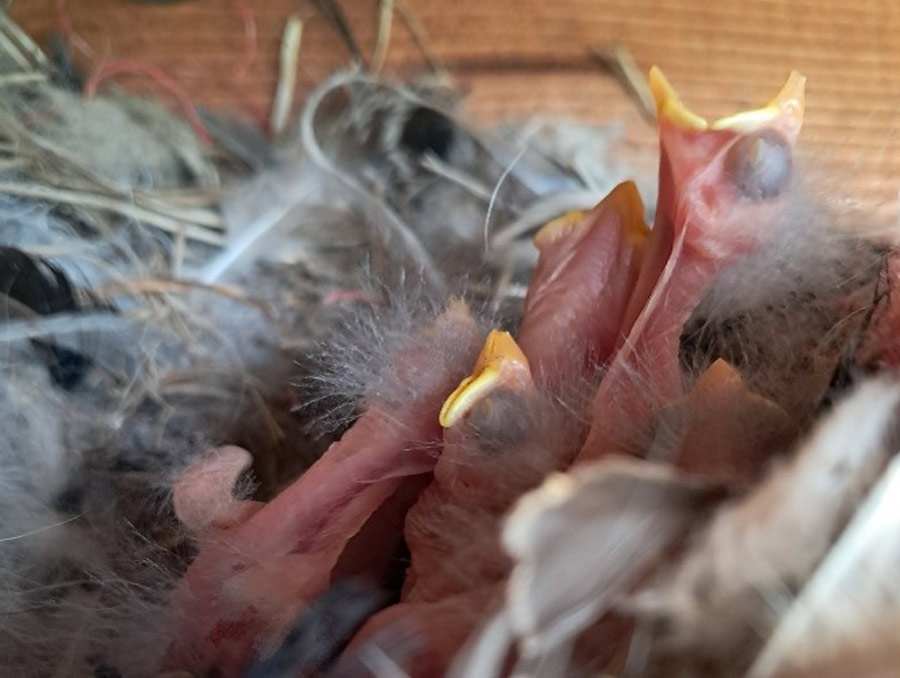James Church started it all 110 years ago, and now - still using his methods - snow surveyors in several agencies in Nevada and California have just finished documenting the lowest Sierra Nevada snowpack on record in 100 years. The snowpack is an important reservoir for farmers, communities and recreationalists in both states.
Church, a University of Nevada, Reno professor, was interested in determining how much snow run-off would supply water to the Reno and northern Nevada area. On the flanks of the 10,700-foot elevation Mt. Rose overlooking Lake Tahoe and Reno, he measured snowpack with the Mt. Rose Sampler, his invention that spawned the first ever snow survey system. The survey extended across the Sierra, which now helps forecast water supplies for both states.
Church's methods were adopted around the world, and he set up monitoring systems in the Andes, the Himalayan Mountains and Europe.
According to papers in the University's Special Collections & University Archives, "He and Samuel B. Doten of the Nevada Agricultural Experiment Station established a weather observatory in 1906 on the summit of Mt. Rose to record data on snow deposits, wind velocities, and runoff. Church and his associates built the observatory by hand, carrying all materials to the summit either by horseback or in backpacks."
In the spring of 1910, he produced the first forecast of how much Lake Tahoe would rise, the first known water supply forecast in the Western United States. This year, climatologists and hydrologists expect that Lake Tahoe won't rise enough to flow out of its natural rim.
His techniques have evolved into the current Natural Resource Conservation Service Snow Survey and Water Supply Forecasting Program that is carried out by the NRCS. NRCS snow surveyor Jeff Anderson, after completing his survey this week, called the snowpack the worst in 100 years.
"We have already experienced significant drought conditions," Nevada State Climatologist and University Associate Professor Douglas Boyle said. "During the last four water years we have received significantly less precipitation, breaking records for lack of precipitation in some places, during the winter periods and warmer than normal temperatures during the summer demand periods."
Boyle conducts a number of research projects aimed at developing a better understanding of the frequency and magnitude of previous short- and long-term droughts. His office collects and interprets Nevada's climate data and shares the analysis with a number of state agencies and the public. He is not alone in conducting outreach and high-caliber research to better understand our environment.
The University of Nevada, Reno has a host of experts who research the water, soils, rangelands, forest ecosystems and weather of Nevada, the West and around the world - as well as look to the future of climate change by designing plants and trees to thrive in low-water environments. In addition, the University of Nevada Cooperative Extension provides Nevada residents with drought-related information, from farming to lawns to home water use, through its "Living with Drought" program.
Megadrought research
A significant amount of research studies on tree rings, sediment and other natural evidence extends our estimates of the climatic conditions back much further in time than modern records, Boyle said. Based on these studies, it is clear that, for the most part, the last 200 or more years have been mostly wet periods compared with the last 15 to 20 years. More importantly, there have been numerous "long-term" droughts of 10 to 20 years during the last thousand years and two "megadroughts" of 240 years and 180 years within the last 1,200 years.
"Research and monitoring of the environment here in the Great Basin helps us make better decisions when we are faced with drought conditions as we are now," Boyle said. "We know through our research of paleoclimates - climate from thousands of years ago - that we have the same conditions now as there were in some of the 200-year megadroughts in the Sierra Nevada and the west."
Boyle, who runs the Nevada State Climate Office based in the University's College of Science as a public service department, noted the region has had to rely on longer-term storages of water to get through the higher than normal demand periods. Municipal water supplies are holding their own, with no forecast of shortages, but the agricultural community has experienced severe shortages in water allocation for both farming and ranching.
Rangeland implications
In the University's College of Agriculture, Biotechnology and Natural Resources, Professor Tamzen Stringham studies rangeland water issues, the effects of prescribed fire on Great Basin rangelands and wildfire impacts on rangelands.
"A severe drought, like what we're looking at this year, can harm plant communities and trigger shortened grazing seasons on public lands," she said. "In the past few years we've seen significant tree deaths in our Porter Canyon Experimental Watershed research site and are predicting an additional mortality in the tree stands this year.
"In 2012 and 2013 we documented large infestations of moths in the Owyhee desert, killing large areas of drought-weakened sagebrush - in the range of thousands and tens of thousands of acres. The dead plants become standing fuel for fires. This rangeland type easily coverts to cheatgrass, a non-native invasive annual grass, after fire. Once this happens it is extremely difficult if not impossible to repair these rangelands, which are important habitat for the sage grouse."
Water reservoirs: from Lake Tahoe to the world
Farmers, ranchers and urban Nevadans alike rely on three main types of water reservoirs: snowpack, surface (man-made) and groundwater reservoirs. Each has a different amount of storage potential and duration. The snowpack is a seasonal reservoir that has the largest potential for storage, surface reservoirs generally store much less water but for potentially longer durations, and groundwater aquifer storage can vary significantly but is generally a long-term storage reservoir used to supplement the others during drought conditions.
University of Nevada, Reno hydrologists Scott Tyler and Laurel Saito both study the water reservoirs of Nevada as well as arid zones around the world. Tyler, a Foundation Professor of Geological Sciences and Engineering in the College of Science and the Graduate Program of Hydrologic Sciences, specializes in arid zone water resources and groundwater recharge.
Saito, an associate professor in the Department of Natural Resources and Environmental Sciences and director of the Graduate Program of Hydrological Sciences, specializes in effects of regional climate change on landscapes, ecosystems and water resources. She researches aquatic ecosystem and reservoir management; ecosystem, hydrodynamic and water resources modeling; and international issues in water resources.
"Living With Drought"
While the University's climate, soils and other environmental-based research helps drive policy and decision making for land management, water management and other issues across the Great Basin and beyond, the University also helps communities through outreach programs and resource identification.
The University of Nevada Cooperative Extension offers a website to direct Nevada residents to resources, workshops and economic help from agencies. The "Living With Drought" website is a one-stop shop where homeowners, gardeners, farmers, ranchers, natural resource managers and others can find information to help them respond to their various drought-related challenges. The website is at http://www.unce.unr.edu/programs/sites/drought/.
As all 17 counties in the State of Nevada have been under a Drought Emergency Declaration since 2012, Cooperative Extension's combination of research and outreach to every county of the state is a valuable asset for Nevadans.
Many of the programs are led by researchers such as Jay Davison, who specializes in crop irrigation strategies for drought, alternative crops and area forage; Ed Smith, a natural resource specialist who gives advice on wildfire threat reduction to homes; and Extension Educator JoAnne Skelly who advises homeowners on low-water-use plants, plant care for drought (including lawn), water-efficient landscaping, firescaping and diagnosing plant stress problems. Cooperative Extension has dozens more specialists throughout the state to help Nevada's communities respond in the short-term and prepare for the long-term.
Preparing for the long-term
Foundation Professor John Cushman of the Department of Biochemistry and Molecular Biology is the lead scientist in a $14 million international research project to move the water-use-efficient photosynthesis characteristics from drought-tolerant plants like agave and cactus into woody biomass plants like poplar. This can hedge against predicted long-term increases in temperatures and reduced precipitation. The biodesign principles and genome-engineering capabilities developed in this project can be extended to increase the water efficiency of other bioenergy and food crops.
Other University researchers with drought-related expertise include Dean of the College of Agriculture, Biotechnology and Natural Resources Bill Payne who studies drought, arid-region soils, sustainable agriculture, crop physiology, hydrology and agroclimatology; Associate Professor and limnologist Sudeep Chandra in the College of Science's Department of Biology who studies long-term climate data, climate fish interactions, aquatic ecosystems, native fisheries/ecosystem restoration and conservation and invasive species; Professor Barry Perryman of the Department of Agriculture, Nutrition and Veterinary Sciences who studies rangeland water issues, effects of prescribed fire on Great Basin rangelands and wildfire impacts on rangelands.
As their research indicates, the science of drought is interconnected among many disciplines of science and engineering, and the University brings that together for the benefit of Nevada, the western United States and arid regions around the world.










